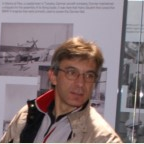Topic Menu
► Topic MenuTopic Editors


Concentrated Solar Technologies and Applications
Topic Information
Dear Colleagues,
Today, solar energy is confirmed as the most widespread, substantial and mature renewable energy capable of transporting our planet towards a truly sustainable ecological transition. In addition to PV technologies, the most mature technological solution concerns thermodynamic solar power, where concentrating systems will be the primary players in the near future.
The most accredited field of application is the field of CSP, but industrial (SHIP) and residential solar applications are becoming increasingly important. The latter allow for integration with other renewable energies and storage systems that make solar concentration particularly attractive for a myriad of hybrid applications.
This initiative aims to stimulate all these possible applications and the technological optimization related to solar concentration.
The Topics of interest for publication include, but are not limited to, the following:
- Solar concentrators;
- Concentrator Solar Power (CSP),
- Solar Heating&Cooling (SHC),
- Integrated Solar System in Building
- Solar solution for Positice Energy Building (PEB),
- Solar solution for Positive Energy District (PED)
- Energy storage for solar system applications;
- Solar solution for distibuted generation system, smart grids, microgrids and hybrid-systrem;
- Experimental techniques for characterization and diagnosis of solar-systems;
- Approaches and tools for modeling and simulation of solar-systems;
- Thermal energy storage, cogeneration and thermal management;
- Combination and integration of several energy sources and storage solutions;
- Energy harvesting and recovery.
Prof. Dr. Maurizio De Lucia
Dr. Giacomo Pierucci
Dr. Francesco Taddei
Prof. Dr. Giuseppe Franchini
Dr. Giovanni Brumana
Topic Editors
Keywords
- energy storage
- energy conversion
- renewable energy
- power generation
- energy management
- power systems
- smart grids
- testing and modeling
- concentrator solar power (CSP)
- solar heating and cooling (SHC)
- integrated solar system in building
- positive energy building (PEB)
- positive energy district (PED)
Participating Journals
| Journal Name | Impact Factor | CiteScore | Launched Year | First Decision (median) | APC |
|---|---|---|---|---|---|

Buildings
|
3.8 | 3.1 | 2011 | 14.6 Days | CHF 2600 |

Energies
|
3.2 | 5.5 | 2008 | 16.1 Days | CHF 2600 |

Materials
|
3.4 | 5.2 | 2008 | 13.9 Days | CHF 2600 |

Solar
|
- | - | 2021 | 16.9 Days | CHF 1000 |

Sustainability
|
3.9 | 5.8 | 2009 | 18.8 Days | CHF 2400 |

MDPI Topics is cooperating with Preprints.org and has built a direct connection between MDPI journals and Preprints.org. Authors are encouraged to enjoy the benefits by posting a preprint at Preprints.org prior to publication:
- Immediately share your ideas ahead of publication and establish your research priority;
- Protect your idea from being stolen with this time-stamped preprint article;
- Enhance the exposure and impact of your research;
- Receive feedback from your peers in advance;
- Have it indexed in Web of Science (Preprint Citation Index), Google Scholar, Crossref, SHARE, PrePubMed, Scilit and Europe PMC.


